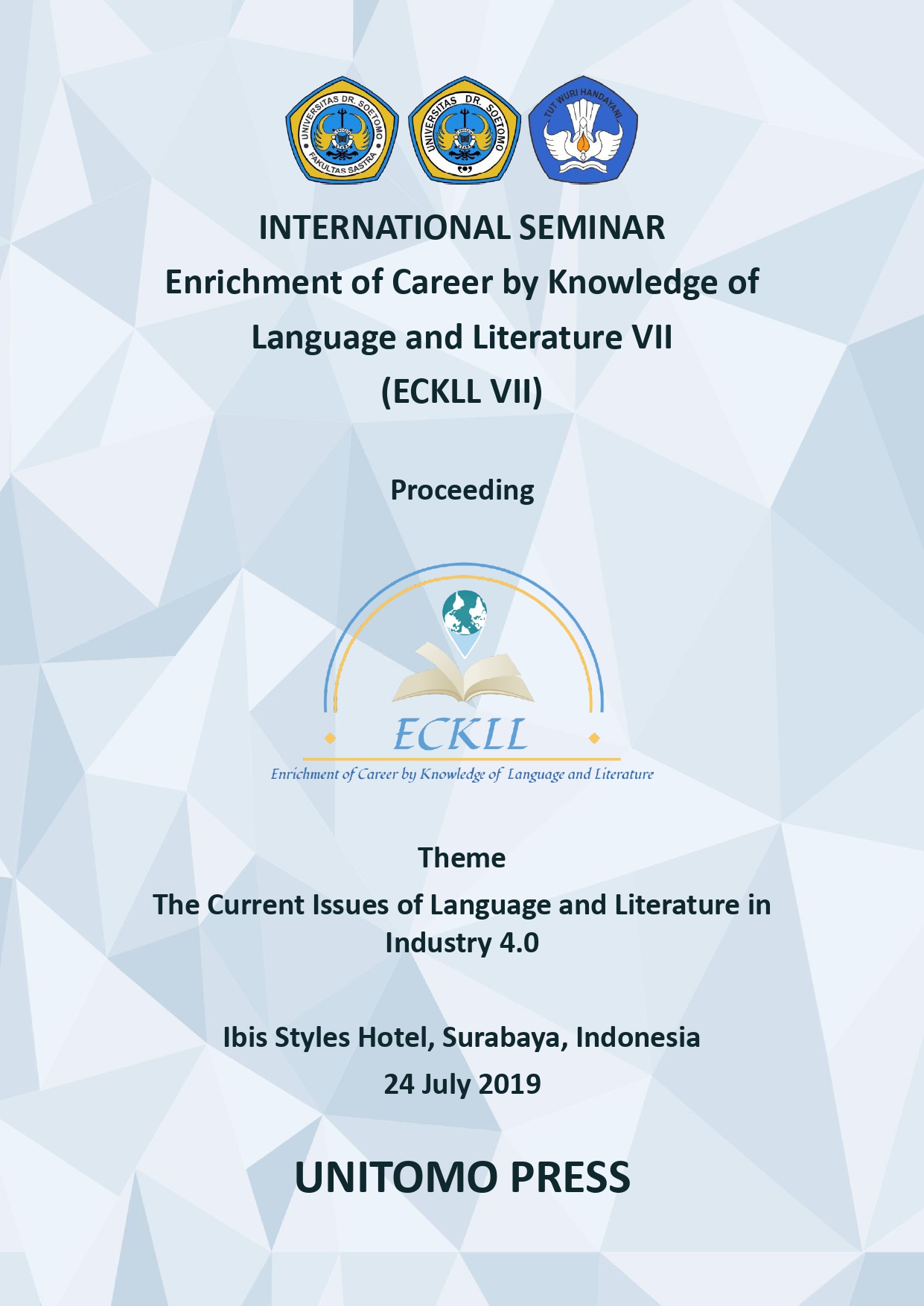PARERGON AND INDONESIAN MODERN AESTHETICS
 Abstract views: 317
,
Abstract views: 317
,
 PDF downloads: 78
PDF downloads: 78
Abstract
Indonesian modern aesthetics in commercialization of mass media shows art as consumed object rather than as aesthetic understanding. From language, literature, to music, there is always the not-beautiful-one as something abandoned by the-beautiful-one. That perspective is referred to Jacques Derrida’s
criticism to Immanuel Kant on parergon ignored by ergon. Derrida said in deconstruction that parergon as periphery is not just complement for ergon as core, but parergon itself has its own aesthetic view. From that criticism, is it possible for parergon to be seen as beautiful in itself? Is it possible for the not-beautiful-one to be seen as beautiful too? By using descriptive qualitative method, this paper aims to explain Derrida’s deconstruction to sharpened binary opposition
between ergon and parergon, as aesthetics is dominated by mass media and is used to measure others through modern values. For another alternative, there is aesthetic experience which enables human beings to understand art in wider perspectives beside merely consumes what is seen empirically in mass media. There is no single universal value for all aesthetic art as any not-beautiful statement may be only object of aesthetic domination. Aesthetic is actually contextual since it includes both art consumption and production of meaning based on cultural experience. In conclusion, Derrida’s deconstruction strategy is to shift focus to those ignored by modern aesthetics. There is no such universal, total, or even definitive value for all art. Similarly, Indonesian modern aesthetics is not totally
dominated by mass media consumption but also enriched by cultural and contextual experience.







